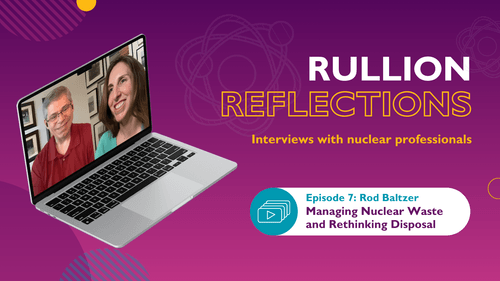RPO vs Traditional Recruitment: Which hiring model is right for you?
The evolution of permanent recruitment models has been remarkable over the past ten years. The once simple decision between in-house and agency recruitment has evolved into a dynamic landscape saturated with options, all designed to provide organisations with enhanced flexibility, control, and efficiency.
The three most common models include Permanent Recruitment, Recruitment Process Outsourcing (RPO), and RPO On-Demand. Each serves a different purpose, but understanding where one ends and another begins can be challenging.
Each plays a unique role in the journey of business growth, yet understanding the transition from one to the next can be difficult.
This bitesize guide outlines the unique offerings of each model, highlights their differences, and provides insights on selecting the approach that aligns perfectly with your hiring requirements.
Click to navigate:
What is Permanent Recruitment?
Permanent recruitment, commonly known as perm recruitment, represents the classic agency model that many businesses recognise. This approach focuses on securing permanent employees rather than relying on temporary or contract arrangements.
Agencies are often engaged by clients to enhance their internal hiring teams or talent acquisition efforts, either for particular positions or when specialised knowledge is needed. The recruitment agency identifies, screens, and presents candidates for specific roles. It continues to be the preferred choice for organisations in need of flexibility or assistance with specialised positions. Yet, permanent recruitment models vary significantly. Here are the three primary approaches:
Contingency: Multiple agencies vie to fill the same vacancy, with payment awarded solely to the agency that successfully places a candidate. This approach emphasises rapid execution and network reach, but it may result in inconsistent quality.
Exclusive: A single agency is granted exclusivity to fill the role within a specified timeframe. The recruiter can dedicate more time in sourcing and screening, free from competing with others.
Retained: An agency is formally engaged on a retained basis (often with part payment upfront) to conduct a bespoke search. This is common for senior, specialist, or hard-to-fill roles and involves a consultative partnership that includes thorough candidate assessments.
Many clients manage agency relationships through a bank of approved agencies, called a Preferred Supplier List (PSL). Some PSLs are tightly structured with defined service levels and performance reviews; others evolve informally based on trust and track record. Over time, HR or talent teams learn which partners deliver best for particular disciplines or regions. For agencies, earning a spot on a PSL means proving consistent delivery and understanding a client’s culture beyond individual vacancies.
When Perm Recruitment is most effective
Permanent recruitment offers flexibility and taps into extensive networks, but it can become expensive or unpredictable when scaling up hiring efforts. This model is ideal for:
- Companies experiencing minimal or consistent recruitment activity.
- Companies in need of specialised talent that is hard to find within their own ranks.
- Businesses seeking quick solutions without the burden of long-term obligations.
What is an RPO?
Recruitment Process Outsourcing, commonly known as RPO, involves delegating all or part of your recruitment function to an external provider. An RPO partner integrates seamlessly into your organisation, taking charge of recruitment from start to finish or at specific stages, rather than tackling each vacancy individually.
This partnership is designed to enhance efficiency while elevating candidate quality and ensuring predictable costs. Some RPO partners go beyond the conventional scope of recruitment to also cover workforce planning, internal mobility, and talent analytics.
How RPO transforms hiring
The RPO model gives organisations enterprise-level capability without expanding their internal headcount. A mature RPO solution will often go beyond typical RPO hiring to build an infrastructure recruitment that seamlessly combines specialist knowledge and operational excellence.
The RPO model gives organisations with enterprise-level capabilities while keeping internal headcount in check. An advanced RPO solution exceeds conventional hiring practices, creating a recruitment infrastructure that effortlessly integrates operational excellence with your people, processes, and technology.
This may include:
- Sourcing and screening candidates at scale.
- Crafting a compelling employer branding and enhancing the candidate journey.
- Deploying applicant tracking systems and analytics dashboards.
- Providing real-time hiring metrics and insights into the talent market.
- Introducing workforce planning and internal mobility strategies.
Benefits of RPO
Partnering with an RPO provider can transform how you attract, engage, and retain talent. In addition to improving process efficiency, the model delivers tangible business impact across:
- Consistency – every candidate experiences the same process, strengthening the employer brand.
- Cost efficiency – lower cost per hire through process optimisation and reduced agency reliance.
- Scalability – resources adjust seamlessly to meet hiring demand.
- Strategic partnership – dedicated experts continuously refine processes and outcomes.
- Visibility – Utilising data-driven reporting to improve decision-making.
In a typical RPO partnership, it's not unusual to see time-to-hire improvements of around 20–30% once processes are standardised.
When is the right time for an RPO model?
RPO is ideal for organisations experiencing high or variable hiring demands, working across multiple business units, or looking at ambitious growth targets. This model is particularly effective when recruitment demands exceed internal capability or when a business wants to elevate talent acquisition to a strategic level.
What is RPO On-Demand?
On-Demand RPO takes the structure and expertise of RPO and applies it flexibly for short-term or project-based needs. Often referred to as Project RPO or RPO Lite, this solution is designed for organisations seeking a more organised and proactive strategy than traditional agency recruitment, without the need for a complete outsourcing partnership.
How RPO On-Demand works
An RPO On-Demand provider seamlessly integrates with your internal team for a fixed period or defined project. Specialist recruiters or campaign managers join your existing processes, elevating them to help you deliver outcomes fast. Our RPO On-demand solution consists of five core modules: talent consultancy, talent outsourcing, search and select, campaign management, and early careers consultancy. You pay only for what suits your needs.
Benefits of RPO On-Demand
Many organisations use RPO On-Demand to enhance recruitment performance and gather valuable insights before evolving into a long-term RPO partnership. The typical benefits of project RPO include:
- Quick access to experienced recruiters and technology.
- Ability to scale up or down in weeks rather than months.
- Lower fixed cost and no long-term contract.
- Improved time to hire through proven processes.
- Continuity and brand consistency for candidates.
When Businesses Use RPO On-Demand
RPO On-Demand is particularly effective when internal capacity and timelines or project scope shift unexpectedly. It lets organisations scale quickly without losing control of quality. Common use cases include:
- Rapid scaling following new investment or expansion.
- Launching a new site, division, or product line.
- Short-term spikes in hiring volume, such as seasonal peaks.
- Overloaded internal teams needing extra resource.
- Testing outsourced recruitment before committing to full RPO.
Comparing perm recruitment, RPO, and RPO On-demand
In practice, the difference lies in how much control and structure you want. Permanent recruitment offers flexibility and reach for individual roles. RPO On-Demand introduces dedicated expertise on a project basis. Full RPO embeds that expertise permanently, transforming recruitment into a scalable business function.
|
Feature |
Perm Recruitment |
RPO |
RPO On-Demand |
|
Commitment |
Per-hire engagement |
Longer-term partnership |
Project or campaign |
|
Scope |
Individual roles |
Part of or end-to-end process |
Modular services |
|
Scalability |
Limited |
Very high (enterprise-wide) |
High (short-term) |
|
Control |
Agency-led |
Outsourced and strategic |
Shared with internal team |
|
Cost model |
Fee per placement |
Monthly or per-hire SLA |
Pay-as-you-use |
|
Best for |
One-off or specialist hires |
Continuous, large scale recruitment |
Rapid or project hiring |
How to choose the right recruitment model
The best recruitment model depends on your hiring patterns, internal capability, and business goals.
Ask yourself:
- How variable are our hiring volumes?
- Do we want to own or outsource recruitment infrastructure?
- What level of visibility and reporting do we need?
- How fast do we need to scale?
The answers help identify whether agility, scalability, or partnership is your priority.
Here are a few guiding scenarios:
- You hire fewer than 10 people a year: Permanent recruitment keeps the process light and flexible.
- You have an internal team but face short-term growth or transformation: RPO On-Demand gives temporary capacity and expertise.
- You hire 200+ people a year or across multiple site and disciplines: RPO provides end-to-end structure and the consistency to garner measurable results.
Permanent recruitment, RPO On-Demand and full RPO hiring models each bring a different balance of flexibility, control, and partnership. The key is aligning your approach with your organisation’s stage of growth and the outcomes you want from your hiring process.
For smaller businesses or one-off hires, agility and speed may matter most. For growing organisations, scalability and consistency often take priority. And for large enterprises, the value lies in visibility, insight, and long-term talent capability.
Reviewing your current pain points, such as time to hire, candidate quality, or recruiter workload, can help reveal whether your existing approach still serves your future goals. Here are five signs your hiring strategy needs a serious overhaul.





